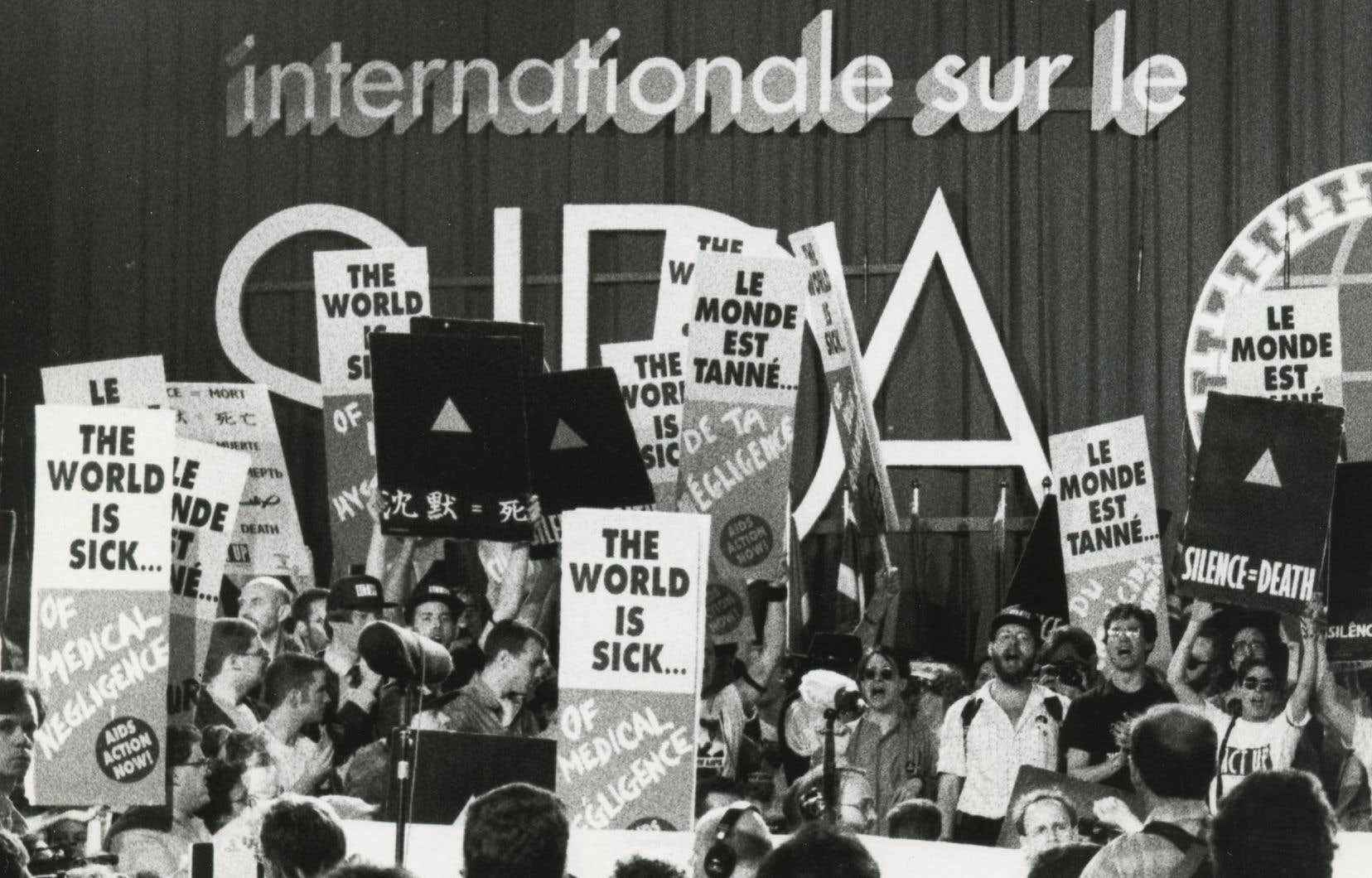This text is part of the special section 100 years of Acfas
If today AIDS seems almost like a disease of the past, it is a whole generation that has been marked by this epidemic. “Patients were coming to the clinic with all kinds of scary illnesses,” remembers the Dr Rejean Thomas. Chronicle of a somewhat forgotten crisis, and of its Montreal face.
1982. A young Quebec dancer who lives in New York presents himself at the clinic of Dr Réjean Thomas, in Verdun, believing he was suffering from “gay cancer”. “It was my first step into the world of AIDS, I did not know that my destiny would be struck by that”, says the Dr Thomas, who will open in 1984 l’Actuel, a clinic specializing in STBBIs, at the gates of the Inclusive District (formerly called Gay Village), and who will find himself at the center of the crisis.
A devastating disease
The disease is still mysterious: a first description appeared in a scientific journal before it was discovered, in 1983, that AIDS is caused by the human immunodeficiency virus (HIV). Even with the first screening tests, “we didn’t know what to do with it, as there was no treatment”, recalls the Dr Thomas. Receiving this diagnosis was extremely stigmatizing for the patient and all those close to him.
In the 1980s, AIDS became the leading cause of death among gay men. “People watched their friends die one after another. It was tragic”, describes Alexandre Klein, philosopher, historian of science and adjunct professor at the Faculty of Health Sciences at the University of Ottawa. The young patients were afflicted with multiple ailments (loss of sight, Kaposi’s sarcoma, dementia, etc.) and died quickly. “There was a lot of physical and moral suffering,” remarks the Dr Thomas.
Collaborate for research
“In Quebec, we first see a mobilization of doctors, who see these cases in their clinics,” observes Mariane Fournier, who did her master’s thesis on the response to AIDS in Quebec under the co-direction of Professor Klein. With the main affected groups marginalized (gay people, Haitians, hemophiliacs and injection drug users), governments are slow to respond.
“In 1985, the epidemic was global and took up so much space that we decided to bring together the scientists working on AIDS every year,” explains Mr. Klein. In 1989, the 5the International AIDS Conference. While this conference is reserved for the medical and scientific profession, activists, patients and community associations (including Act-Up and Reaction sida) come to demonstrate.
“These people say ‘you can’t only meet as scientists.’ It’s not just a medical problem, it’s a social problem,” emphasizes Alexandre Klein. From that moment on, “associations, relatives and patients will be invited into medical research and assert themselves as full players in the fight against AIDS”, he adds. This way of doing research is particularly strong in Quebec.
“It redefined the relationship between doctors and patients, despite the tragedy that was the epidemic”, sums up Mariane Fournier. It is thanks to the mobilization of physicians, but especially of patients, that major advances in research will be made.
Montreal, an important hub
Montréal stood out in different ways during these years. “It is one of the first cities where we set up a care center, early in the epidemic”, remarks Mr. Klein. The clinic of Dr Thomas becomes a model in Canada and around the world. “The management here is done by family doctors, rather than by the hospital system and infectious disease specialists”, compares the Dr Thomas. The holistic approach places the patient-doctor relationship at the center of the intervention.
The first antivirals were discovered in the late 1980s. Biochemist Bernard Belleau and researcher Mark Wainberg, two Montrealers, would play a key role in the discovery of Lamivudine (3TC), which was approved in 1995-1996. Thanks to antivirals, AIDS patients live a more or less normal life, keeping their viral loads very low. We also now know that AIDS can be cured. “It is very rare, but it is possible”, notes the Dr Thomas.
Unfortunately, little seems to have been learned from this great crisis. Cuts in public health funding, abandonment of awareness campaigns against AIDS, discriminatory public health strategies… “We managed COVID and monkeypox as if AIDS had never existed”, laments Ms.me Fournier.
